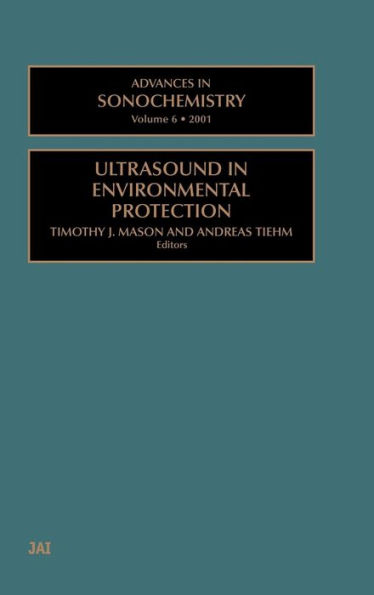Advances in Sonochemistry: Ultrasound in Environmental Protection
Ultrasound in Environmental Protection focuses on one of the more significant developments in the subject - environmental remediation - providing an overview on both the fundamentals and applications of ultrasound in environmental protection, incorporating recent research and state-of-the-art information on the scientific basis, modes of use, and engineering developments. A broad spectrum of topics are covered: reactor design, sonochemical pollutant degradation, integrated unltrasonic/ biological treatment, ultrasound in disinfection, leaching by ultrasound, and ultrasonically enhanced removal of suspended solids.Ultrasound is generated and applied at frequencies from 20 kHz to several MHz. The physio-chemical parameters of the sonicated media, reactor design, applied intensity, and duration of sonication, dramatically influence the effects that can be achieved. It is hoped that this compilation will contribute to a better understanding and further development of sonochemistry as a clean technology not only for environmental remediation but also more generally.The foundation of this compilation was formed during a workshop that was held at the Technical University of Hamburg-Harburg, Germany, in March 1999. This was the first workshop to be devoted to 'Ultrasound in Environmental Engineering' and brought together experience and knowledge from a broad spectrum of disciplines including chemistry, biology, engineering, equipment manufacturing, and plant design.
1147769645
Advances in Sonochemistry: Ultrasound in Environmental Protection
Ultrasound in Environmental Protection focuses on one of the more significant developments in the subject - environmental remediation - providing an overview on both the fundamentals and applications of ultrasound in environmental protection, incorporating recent research and state-of-the-art information on the scientific basis, modes of use, and engineering developments. A broad spectrum of topics are covered: reactor design, sonochemical pollutant degradation, integrated unltrasonic/ biological treatment, ultrasound in disinfection, leaching by ultrasound, and ultrasonically enhanced removal of suspended solids.Ultrasound is generated and applied at frequencies from 20 kHz to several MHz. The physio-chemical parameters of the sonicated media, reactor design, applied intensity, and duration of sonication, dramatically influence the effects that can be achieved. It is hoped that this compilation will contribute to a better understanding and further development of sonochemistry as a clean technology not only for environmental remediation but also more generally.The foundation of this compilation was formed during a workshop that was held at the Technical University of Hamburg-Harburg, Germany, in March 1999. This was the first workshop to be devoted to 'Ultrasound in Environmental Engineering' and brought together experience and knowledge from a broad spectrum of disciplines including chemistry, biology, engineering, equipment manufacturing, and plant design.
235.0
In Stock
5
1

Advances in Sonochemistry: Ultrasound in Environmental Protection
284
Advances in Sonochemistry: Ultrasound in Environmental Protection
284Hardcover
$235.00
235.0
In Stock

Product Details
| ISBN-13: | 9780444507051 |
|---|---|
| Publisher: | Elsevier Science |
| Publication date: | 06/22/2001 |
| Series: | Advances in Sonochemistry , #6 |
| Pages: | 284 |
| Product dimensions: | 6.12(w) x 9.21(h) x (d) |
From the B&N Reads Blog
